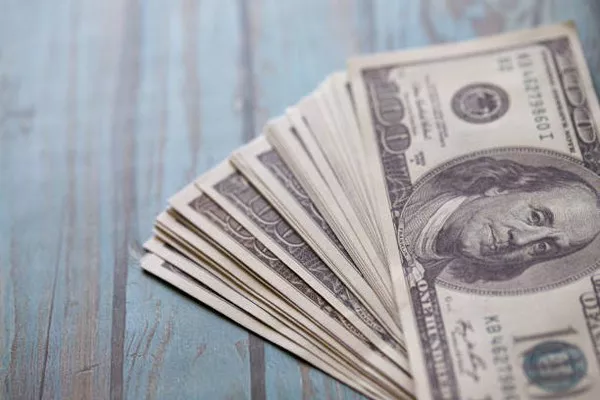The $2 bill, often regarded as an unusual denomination in American currency, holds a unique fascination among collectors and enthusiasts. Within this realm of numismatics, sequential $2 bills stand out as particularly prized items. But what exactly are sequential $2 bills, and how much are they worth? This article aims to delve into the intricacies of sequential $2 bills, exploring their value, significance, and the factors influencing their price in today’s market.
Understanding Sequential $2 Bills
Sequential $2 bills refer to a series of $2 bills that are issued in consecutive numerical order by the U.S. Bureau of Engraving and Printing. These bills are typically sought after by collectors due to their uniformity and rarity. The sequential numbering adds an element of novelty and completeness to a collection, making them highly desirable among numismatists.
Features of Sequential $2 Bills
Sequential $2 bills possess several distinguishing features:
Consecutive Serial Numbers: One of the defining characteristics of sequential $2 bills is their consecutive serial numbers. Each bill in the series will have a serial number that follows the preceding one in numerical order.
Uncirculated Condition: Collectors often seek sequential $2 bills in uncirculated condition, meaning they have not been used for transactions and retain their original crispness and clarity.
Variants and Series: Sequential $2 bills can belong to various series and may feature different designs, such as the traditional green seal or special commemorative editions.
Determining the Value of Sequential $2 Bills
The value of sequential $2 bills can vary depending on several factors, including their rarity, condition, demand among collectors, and current market trends.
Rarity and Age
Older sequential $2 bills tend to be rarer and thus command higher prices in the collector’s market. Bills from discontinued series or those with unique printing errors are especially sought after by enthusiasts.
Condition
The condition of sequential $2 bills plays a significant role in determining their value. Bills in pristine, uncirculated condition are typically more valuable than those with signs of wear or damage. Factors such as creases, stains, and folds can diminish the bill’s appeal to collectors.
Demand and Market Trends
The demand for sequential $2 bills can fluctuate based on collector preferences and market trends. Bills featuring particularly desirable serial numbers, such as low or repeating digits, may attract higher bids at auctions or in private sales.
Authentication and Certification
To ensure the authenticity and quality of sequential $2 bills, collectors often seek certification from reputable grading services. Professional authentication adds credibility to the bill’s value and provides assurance to potential buyers.
Factors Influencing the Worth of Sequential $2 Bills
Several key factors can influence the worth of sequential $2 bills:
Serial Number
The serial number of a sequential $2 bill can significantly impact its value. Bills with low or unique serial numbers, such as 000001 or repeating digits (e.g., 12345678), are often considered more desirable and can command higher prices in the collector’s market.
Series and Design
Sequential $2 bills from certain series or featuring special designs may be more valuable to collectors. Limited-edition releases, commemorative prints, or bills from discontinued series can fetch premium prices due to their scarcity and historical significance.
Printing Errors and Variants
Bills with printing errors or variants are highly sought after by collectors. These anomalies, such as inverted seals or misaligned serial numbers, add rarity and uniqueness to the bill, increasing its value among enthusiasts.
Historical Significance
Sequential $2 bills with historical significance, such as those associated with notable events or figures, may command higher prices in the numismatic market. Collectors often value bills with ties to significant moments in American history or cultural heritage.
FAQs
1. Are sequential $2 bills legal tender?
Yes, sequential $2 bills are legal tender issued by the U.S. government and can be used for transactions like any other currency. However, due to their collectible nature, many enthusiasts prefer to preserve them rather than circulate them for everyday use.
2. How can I obtain sequential $2 bills for my collection?
Sequential $2 bills can be acquired through various means, including banks, currency exchanges, numismatic dealers, and online marketplaces. Some collectors may also obtain them through trades or auctions within the numismatic community.
3. Are sequential $2 bills a good investment?
While sequential $2 bills can appreciate in value over time, their worth as an investment depends on factors such as rarity, condition, and market demand. As with any collectible, it’s essential to research thoroughly and consider factors beyond potential monetary gain, such as personal enjoyment and passion for numismatics.
See Also How Much USD Can I Carry To USA
Conclusion
Sequential $2 bills hold a special place in the world of numismatics, prized for their rarity, uniformity, and historical significance. While their value can fluctuate based on various factors, collectors continue to seek out these unique pieces of American currency, adding depth and richness to their collections. Whether acquired for investment purposes or as cherished keepsakes, sequential $2 bills offer a fascinating glimpse into the diverse and captivating world of coin and currency collecting.


